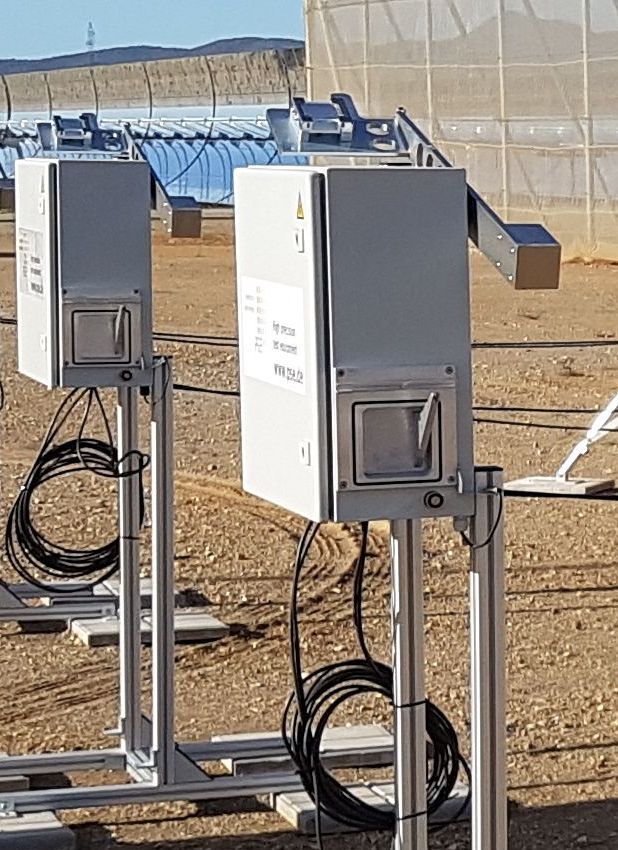| Duration: | August 2014 - May 2018 |
| Contracting Authority/ Sponsors: | Federal Ministry for Economic Affairs and Energy (BMWi) |
| Project Partners: | Suntrace GmbH, Hamburg; PSE AG, Freiburg |
| Project Focus: |
AVUS – Automated In-Situ Measurement of Soiling Rates and Spectra

Soiling of mirrors in solar thermal power plants reduces the yield and affects economic efficiency. The goal of the project is the development of a device for automatic registration of soiling at sites for solar power plants for the qualification of plant sites as well as during power plant operation. Since yield reductions and cleaning costs represent a significant contribution to the economic efficiency of solar power plants, better understanding of the soiling characteristics at a given site would be a helpful criterion for risk reduction and financing when selecting and qualifying power plant projects and would support an optimization of the cleaning cycles during operation.
During this project, a measuring device is developed which automatically registers the soiling of mirrors in solar thermal power plants and which can be remotely operated, is basically maintenance-free and can be integrated into existing weather and/or radiation measuring stations, for example.
The device can automatically register the type and rate of contamination at potential sites of solar thermal power plants as well as later during operation of the power plant. Precise information about the soiling characteristics makes it possible to make more realistic assessments regarding the loss of revenue and required cleaning efforts which can contribute to lowering uncertainty and financing costs. During operation of the power plant, the device can be used to monitor the soiling rates in the solar field and optimize the cleaning cycles. Due to the typically varying soiling rates across a solar field, several devices can be placed at different locations. The automated measurement replaces laborious manual measurements while the adjustment and optimization of mirror cleaning accounts for lowering operating costs and thereby increases economic efficiency.
In addition to the development of reliable device hardware, reliable correlations between the registered data and the soiling in power plants must be developed. They will be validated using field tests of two prototype generations during the project.